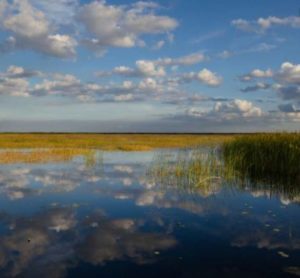The Army Corp of Engineers announced the discharges will start Tuesday or Wednesday. Florida Commander Andrew Kelly announced Friday that the rate likely will be 1.16 billion gallons a day east to the St. Lucie River and 2.59 billion gallons a day west to the Caloosahatchee River. The exact rate will be announced today or tomorrow during a conference call.
Kelly said The Corps will try to keep the discharge period as short as possible but that depends on the weather. They could take a month or more.
As of Sunday Lake O’s elevation was 16.14 feet above sea level. The lake rose six inches during the first week of October. Rainy season does not end until the end of November. Some local residents blame the 2018 blue-green algae nightmare, in part, on constant releases from Lake O.
We reached out to Calusa Waterkeeper John Cassani and asked him what these releases might mean for the water in our area. “Too much freshwater runoff or Lake discharge flushes the estuary and lowers the salt content too much. The Caloosahatchee estuary is already getting rainfall runoff from the watershed near the harm level. This can be damaging to plants and animals that have adapted to estuarine conditions, especially for clams, oysters and other species that cannot swim or move to more optimal salinity conditions.”
Obviously a big concern to everyone in the local area is the algae. We asked Cassini to tell us if these releases increase the possibility that we’ll face an algae mess like we did in 2018. “Combined basin runoff and Lake discharges increase the loading rate of nutrients like nitrogen and phosphorus that can promote blue-green algae blooms or make red tide last longer or become more severe nearshore. There has been an off and on bloom of Trichodesmium (a marine cyanobacteria) offshore of southwest Florida that typically precludes a red tide bloom. If the runoff and Lake discharge continues for more than a couple of weeks it will increase the probability of a nearshore red tide bloom.”

According to Cassini October 8th satellite imagery indicated about 100 square miles of a blue-green algae bloom on Lake Okeechobee. Releases from the Lake can inoculate the Caloosahatchee River, and possibly increase the probability of a blue-green algae bloom.
Cassini said heavy runoff and Lake discharge will result in stained water entering the estuary and near the barrier islands. If you see an algae bloom report it to the FDEP algae reporting website. Avoid the water if you see what you think is an algae bloom or red tide.


Comments are closed.